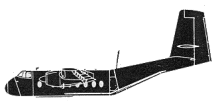Incident Overview

Description
Lockheed Constellation PP-PDJ was carrying out a scheduled Panair flight from London to Buenos Aires with stops at Paris, Lisbon, Dakar, Recife, Rio de Janeiro, S?o Paulo and Asuncion. The aircraft was on the S?o Paulo – Asuncion leg of this flight when the crew contacted Asuncion at 01:05. They were cleared to land on runway 02 and were told to report when on finals. Last contact was at 01:15. The aircraft was descending through clouds until the left wing hit a 12 metre tree. Part of the wing broke off and the plane continued knocking down coconut trees. Some 500 metres from the initial point of impact, the aircraft came into violent contact with a tree at ground level, uprooting it, so that the fuselage fell over in a position facing about 30ø to the left of the path of flight. At this point the fuselage caught fire. PROBABLE CAUSE: “1) The accident was due to a piloting error in making the approach circuit on instruments. An error in timing resulted in the final approach being initiated at too great a distance from the airport. Proof of this was provided by the fact that the landing gear was found extended, the flaps down, the mixture control set at ‘rich’, all of which indicated that the aircraft was in the ready to land condition. 2) The accident was caused by personnel failure: pilot error. The pilot did not follow the recommended procedure for instrument final approach and he descended below the height prescribed in the final approach chart. Concurring factors were: 1) flight fatigue, due to excess flight time. The pilot flew in the preceding months an average of 113 hours. 2) The crew did not follow the normal cockpit procedure. The co-pilot did not set his altimeter to the received altimeter settings. 3) Bad layout of the face of the chronometer of the instrument panel, which did make the readings more difficult.”
Primary Cause
Pilot error in the instrument final approach, specifically an incorrect timing of the final approach.Pilot error in the instrument final approach, specifically an incorrect timing of the final approach.Share on:





